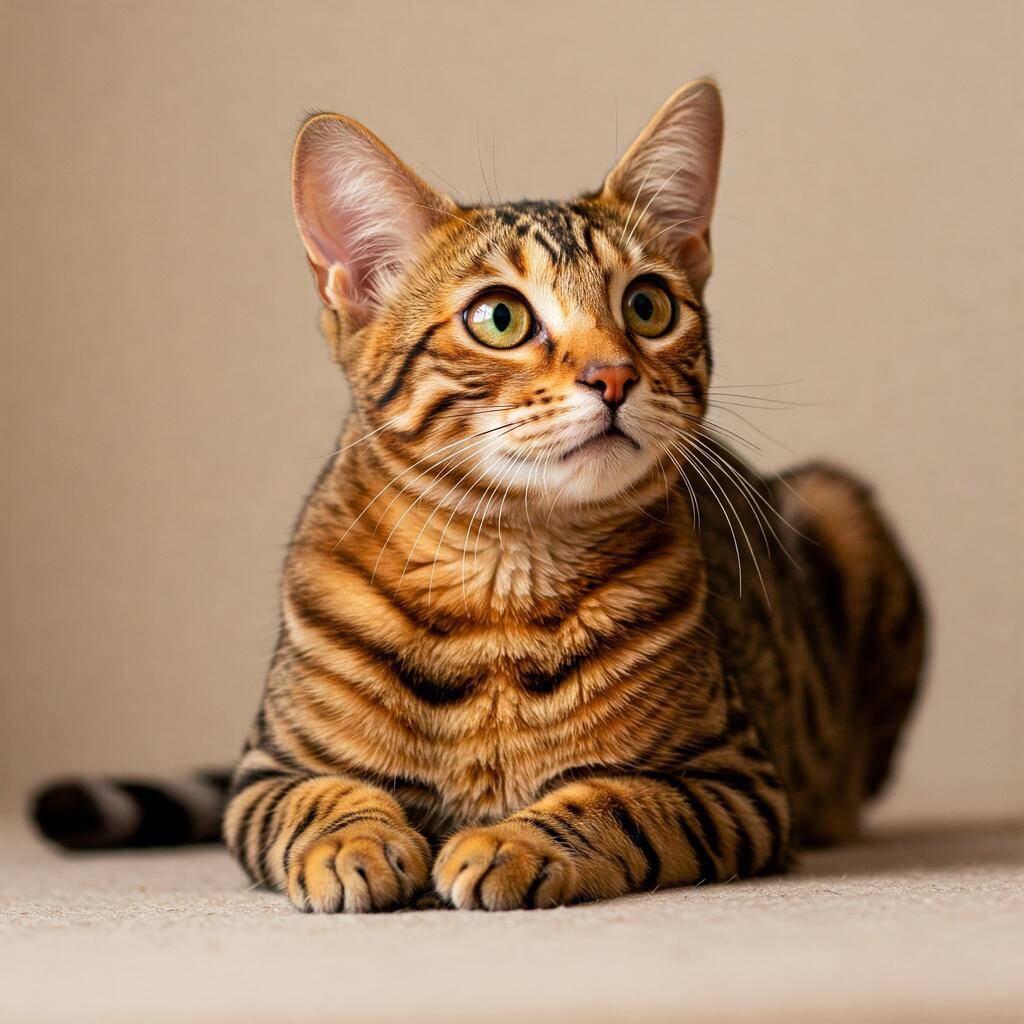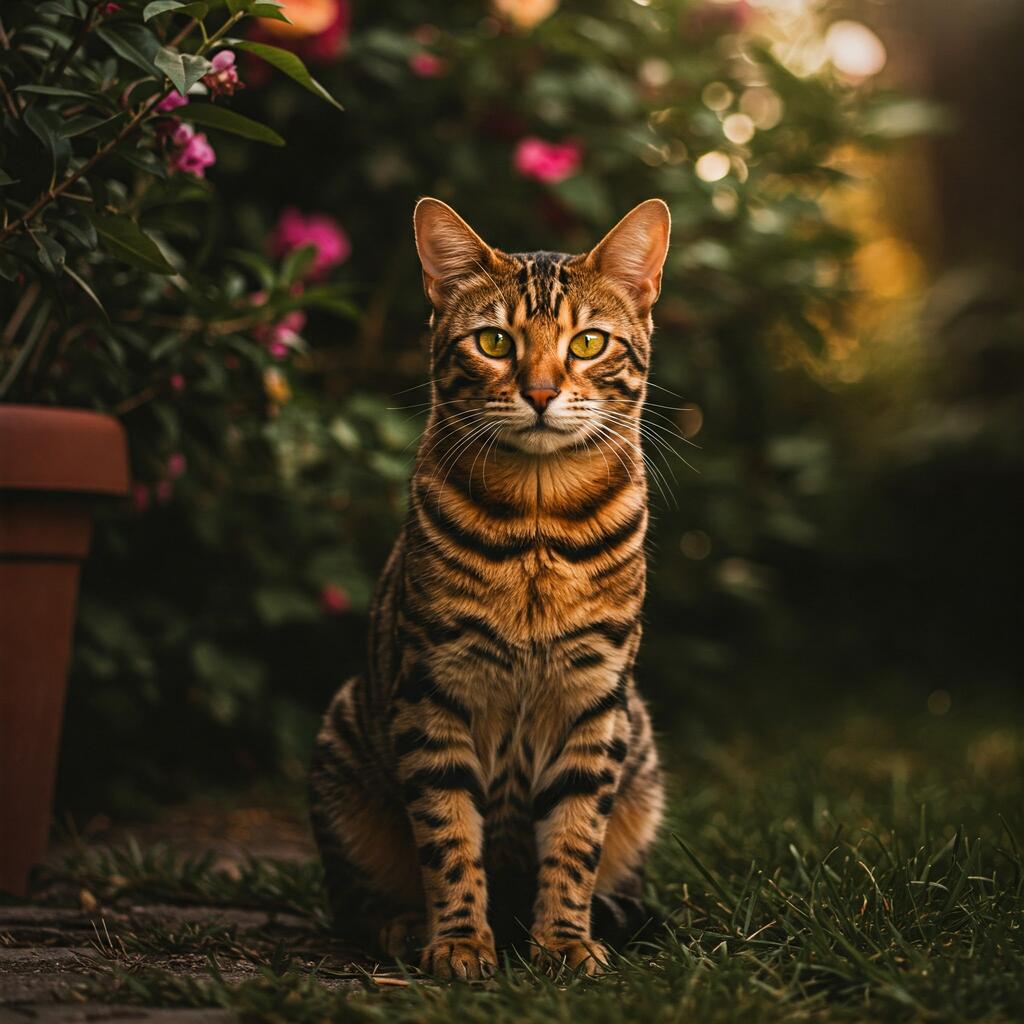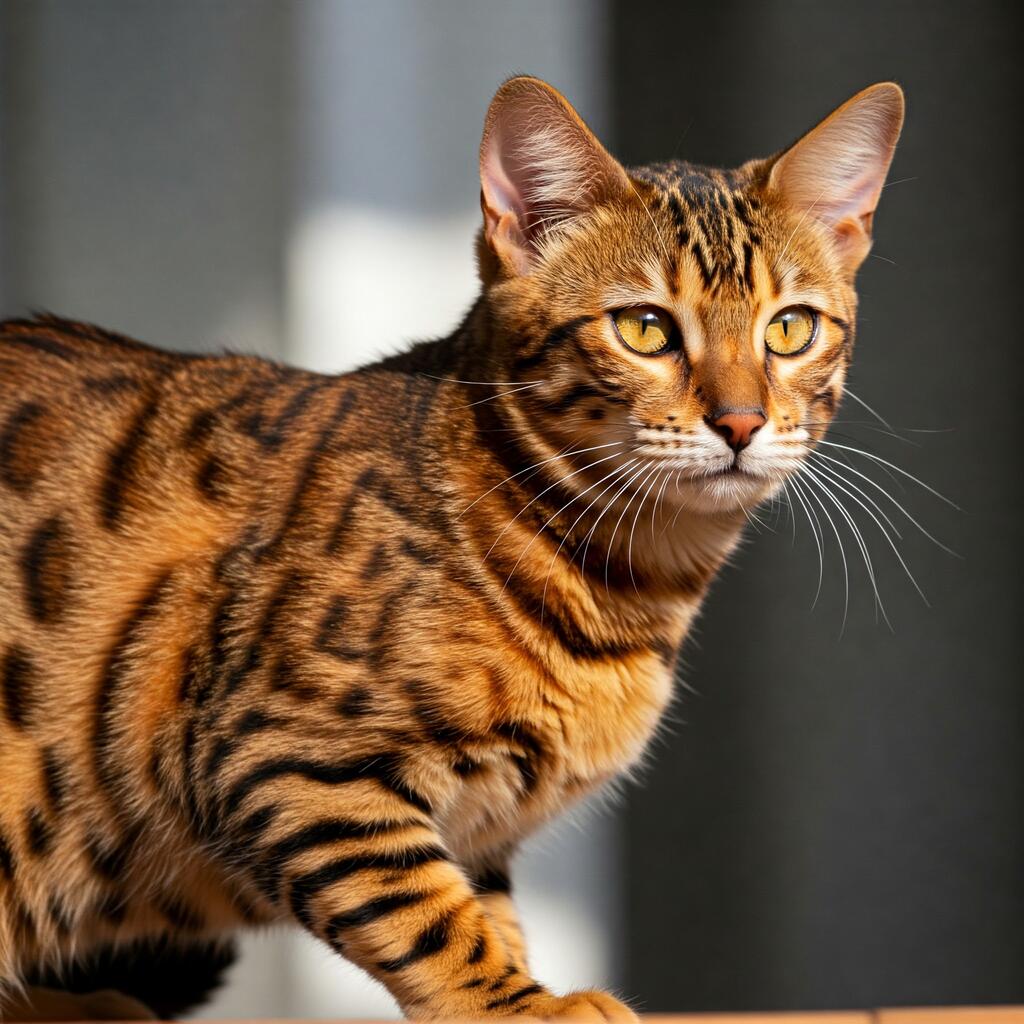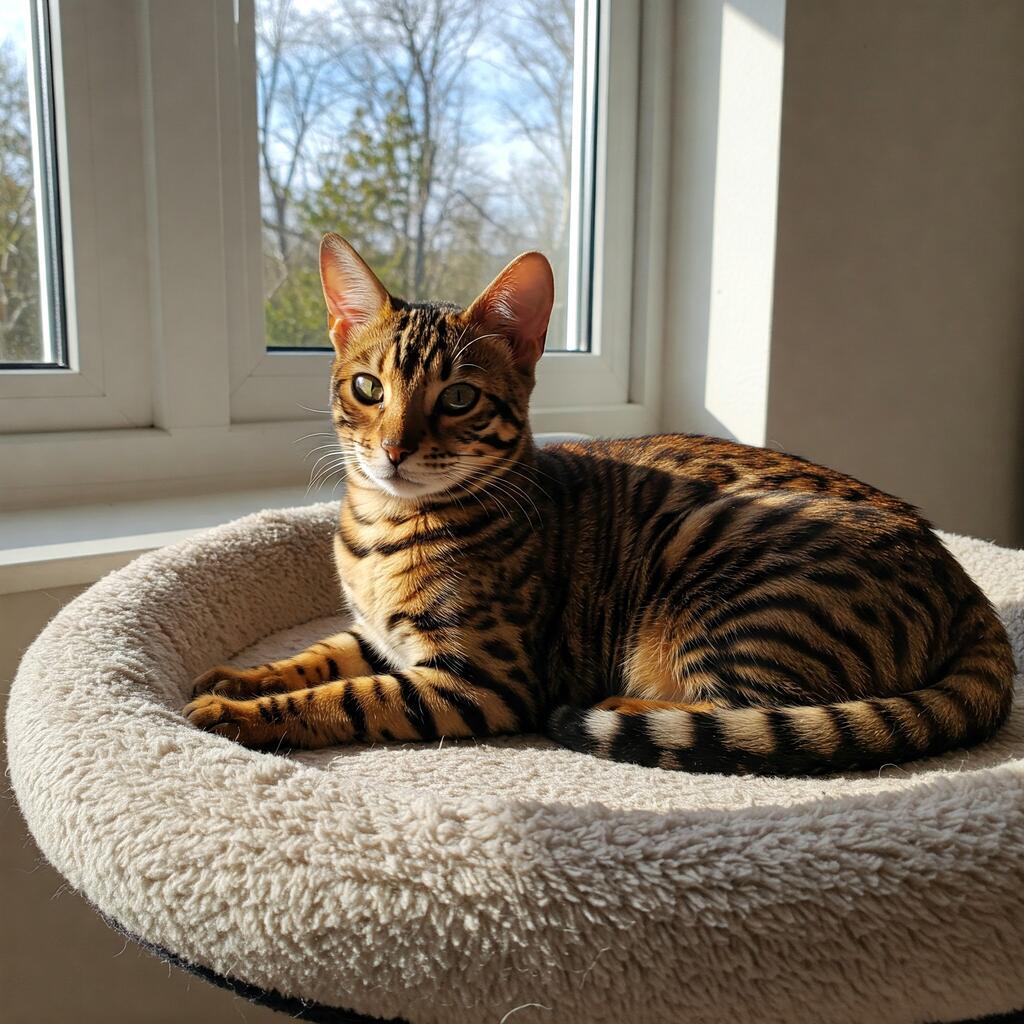
Exploring the Exotic Appearance of the Toyger Cat
The Toyger cat is a very recent breed that originated in the United States. Its name literally means toy (toy) and tiger (tiger). In fact it was created to resemble a miniature tiger. In the 1980s a breeder, Judy Sugden, obtained this cat by crossing many different cats (there is even talk of 40 breeds).
She started, however, with a cat of Bengal ancestry, a fruit of her selections that had striations similar to the coat of a tiger. Then she continued by crossing Makerel Tabby cats with Bengals, until she arrived at the present standard.
It is very well known and loved in the United States and in England and is slowly spreading also in Italy even if for now there are very few breeders of this breed.
Character of the Toyger Cat

He is playful, affectionate, very curious and highly intelligent. He can also be led on a leash and, strangely enough, loves water. He is generally well disposed not only with family members and other animals but also with those he has just met and even with strangers to whom he asks for cuddles and attention.
It is suitable both for children because it is very playful and not at all aggressive, and for the elderly because it does not disdain flat life and although an active breed, it also appreciates calm. It loves to hunt so it is best not to keep small animals such as birds or rodents within its reach.
It cannot stand being alone for long periods of time, so if you are never at home during the day it would be a good idea to get it another playmate.
Appearance of the Toyger cat

The main characteristic of the Toyger cat is the colour of the coat, which must be tigerish. It is uniformly short, very soft and dense, usually white around the eyes and slightly longer around the muzzle.
The coat colour is brown with orange parts on the belly, the stripes range from dark brown to black and are present all over the body including the paws. The darker parts have slightly longer fur and the coat is very shiny.
Health and care of the Toyger Cat

Its coat does not require any special care; it only needs to be brushed once a week to keep it soft and shiny. It loses very little hair even during the moulting period.
It has an average life expectancy, i.e. 12 to 15 years, and care is as it should be for all felines: cleaning its ears once in a while and cutting its nails. It is a cat that manages its diet by itself, it does not tend to put on weight and the recommended foods are both kibble and wet food, in any case of excellent quality.






















